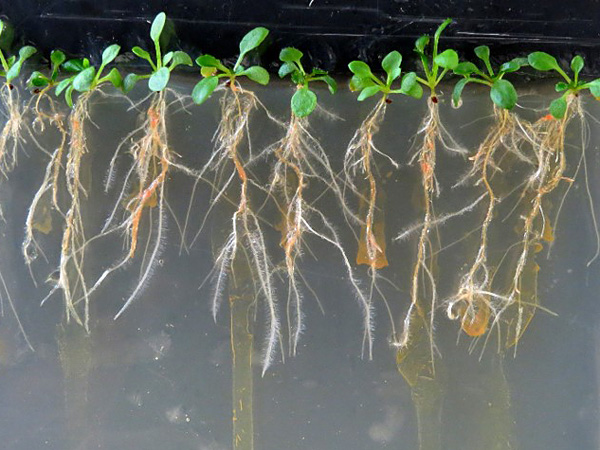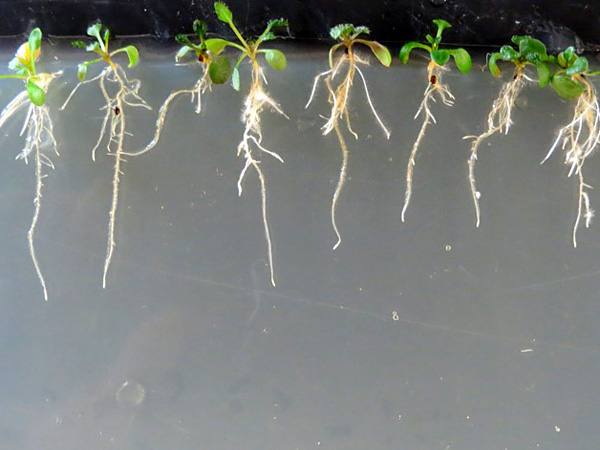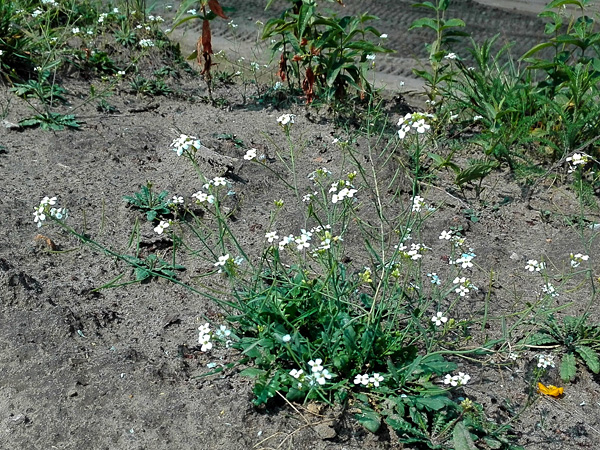Plant mycobiome and metal toxicity to plants – the case of Arabidopsis arenosa
Studying the mechanisms responsible for plant tolerance to stress caused by high accumulation of metals in the environment is crucial in the context of restoring natural values to areas destroyed by human activities, especially industrial activities. It is known that plants cope with excess metals in the substrate using at least two strategies – they can counteract the entry of metal ions into the roots, and further into the above-ground organs, or detoxify them (e.g. by chelating and locating them in vacuoles). It also seems that the plant mycobiome, i.e. the group of fungi growing in and on the plant, plays a role in shaping plant tolerance to metals. This issue is so far poorly understood.
The journals Environmental Microbiology and Science of The Total Environment have recently published articles, co-authored by Agnieszka Domka from our Institute, regarding the mycobiome of Arabidopsis arenosa – a plant often found in anthropogenic habitats polluted with metals. The authors showed that the presence of metals in the substrate in amounts toxic to plants causes a decrease in the diversity of soil fungi and changes in the structure of the A. arenosa mycobiome, including a significant reduction in the occurrence of Agaricomycetes in this plant. It also turned out that the endophytic yeast Sporobolomyces ruberrimus, isolated from A. arenosa tissues from post-mining areas heavily contaminated with metals, can reduce the bioavailability of iron, making this metal less toxic to the plant. Interestingly, the mentioned yeast also affects plant mechanisms related to the uptake and transport of iron – they inhibit these mechanisms under high concentration of this metal in the substrate – which can be read in Agnieszka Domka's earlier work, published in Plant, Cell & Environment.
We invite you to read all three articles:
Ważny R., Jędrzejczyk R.J., Domka A., Pliszko A., Kosowicz W., Githae D., Rozpądek P. 2023. How does metal soil pollution change the plant mycobiome? Environmental Microbiology in press. DOI
Jędrzejczyk R.J., Gustab M., Ważny R., Domka A., Jodłowski P.J., Sitarz M., Bezkosty P., Kowalski M., Pawcenis D., Jarosz K., Sebastian V., Łabaj P.P., Rozpądek P. 2023. Iron inactivation by Sporobolomyces ruberrimus and its potential role in plant metal stress protection. An in vitro study. Science of The Total Environment 870: 161887. DOI

In vitro culture of A. arenosa on a medium containing Zn, Fe and Cd – plants inoculated with S. ruberrimus.
Photo: Agnieszka Domka

In vitro culture of A. arenosa on a medium containing Zn, Fe and Cd – plants non-inoculated with S. ruberrimus.
Photo: Agnieszka Domka

A. arenosa growing on a heap.
Photo: Roman Jędrzejczyk

Heaps of the Bolesław Mining and Metallurgical Plant.
Photo: Roman Jędrzejczyk






